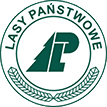A unique geomorphological structure on a continental scale — the inland delta of the Nida River, is one of the richest natural areas in Europe. It is an area of a geologically conditioned tectonic sinkhole with an area of approx. 20 km2, closed to the south with the Pińczowski Rise. The resulting layout of the terrain has long been conducive to the formation of floodplains. The layout of the Nida river basin causes the river to collect a lot of water in the Świętokrzyskie Mountains, has a steep slope and transports a lot of sediments. As it flows into the vast, flat and sandy terrain, it slows down its course and its lifting force decreases sharply, leaving most of the carried sediments here. As a result, the Nida behaves as if the area was an estuary to the sea: it very quickly builds up the sediments in the riverbed, raising it above the surrounding area and, during major floods, transfers the riverbed to lower places creating a branched system of waterways, similar to the coastal deltas, with the difference, however, that the branches are rejoined before the Pińczowski Rise.
Unfortunately, as a result of erroneous land development works carried out in the 1980s and 1990s, the hydrological layout of the region was seriously damaged. The idea of restoring the natural character of the Delta has been raised many times over the last 30 years, but it has never been possible to gather the necessary resources to carry out the comprehensive work.
The main objectives of the project
The main objective of the project is to improve the water conditions of the inland delta of the Nida River, which will contribute to the restoration of unique natural values within the meaning of the Birds and Habitats Directives, including in particular:
- *91E0 Willow, poplar, alder and ash riparian forests;
- 3150 Oxbow lakes and natural eutrophic water reservoirs;
- restoration of meadow habitats to favorable conservation status, including the creation of optimal habitat conditions for birds (e.g. the bittern, corncrake, spotted crake, white stork);
- restoration or restitution of the population of species under strict protection: hick shelled river mussel, lesser ramshorn snail, Desmoulin’s whorl snail, fire-bellied toad, crested newt and pond turtle.
Indirect objectives of the project
The indirect objective of the project is the restitution of cow grazing which was abandoned in the 1990s, which will affect the long-term maintenance of meadow habitats and animal species, will enable the creation of new jobs and will restore cultural archetypes associated with grazing.
An additional goal is to activate the local community in terms of raising environmental awareness related to the threat and the need to protect one of the most valuable ecosystems of the Ponidzie region as well as education aimed at a wider audience.
The coordinating beneficiary:
The total value of the project:
Komisja Europejska przyznała 60% dotacji, Narodowy Fundusz Ochrony Środowiska i Gospodarki Wodnej w Warszawie – 30%, a pozostałe 10% wartości projektu stanowią środki własne beneficjenta i współbeneficjentów.
An associated beneficiary:
- National Forest – Forest District Pińczów
- The University of Agriculture in Kraków
Completion date:
January 1, 2019. 31 December 2024 r.












